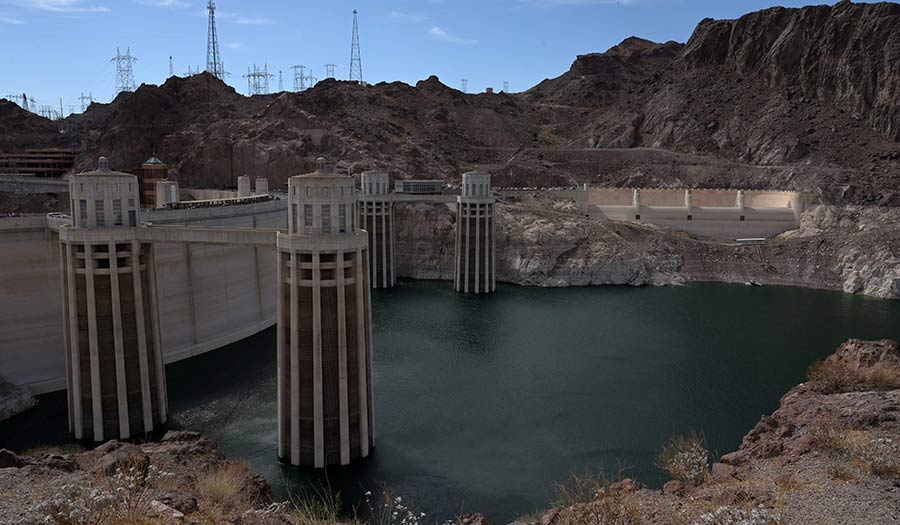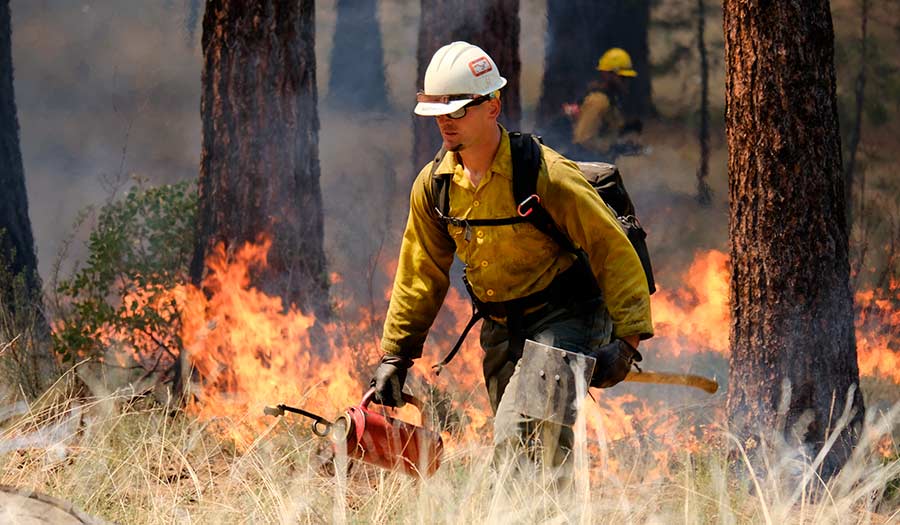 Bridget Bennet
Bridget Bennet
World News Desk
Learn the why behind the headlines.
Subscribe to the Real Truth for FREE news and analysis.
Subscribe NowReuters – The reservoir created by Hoover Dam, an engineering marvel that symbolized the American ascendance of the 20th century, has sunk to its lowest level ever, underscoring the gravity of the extreme drought across the U.S. West.
Lake Mead, formed in the 1930s from the damming of the Colorado River at the Nevada-Arizona border about 30 miles east of Las Vegas, is the largest reservoir in the United States. It is crucial to the water supply of 25 million people including in the cities of Los Angeles, San Diego, Phoenix, Tucson and Las Vegas.
As of Wednesday, the lake surface fell to 1,071.56 feet above sea level, dipping below the previous record low set on July 1, 2016. It has fallen 140 feet since 2000—nearly the height of the Statue of Liberty from torch to base—exposing a bathtub ring of bleached-white embankments.
The drought that has brought Lake Mead low has gripped California, the Pacific Northwest, the Great Basin spanning Nevada, Oregon and Utah, plus the southwestern states of Arizona and New Mexico and even part of the Northern Plains.
Farmers are abandoning crops, Nevada is banning the watering of about one-third of the lawn in the Las Vegas area, and the governor of Utah is literally asking people to pray for rain.
Firefighters are facing worsening conditions this summer—after nearly 10,000 fires in California alone during the last wildfire season burned 4.2 million acres, an area nearly as large as Kuwait.
Droughts are a recurring natural hazard but made worse recently by an accumulation of extremely dry years for most of this century.
The rains that deluged the West at the end of 2015—before the previous low-water mark was set at Lake Mead—were a mere respite from what is now a 22-year drought, the driest period in 115 years of record-keeping by the U.S. Bureau of Reclamation, which manages water resources in the Western states.
“Some states, especially parts of California and parts of the southwest, it’s really quite extreme drought conditions,” said Ben Cook, a climate scientist at NASA’s Goddard Institute for Space Studies.
In his decade of farming in North Dakota, Devin Jacobson has never seen it this dry. Jacobson’s 3,500 acres of mostly durum wheat, canola, peas and lentils near Crosby have seen little rain beyond this season beyond two inches in late May and a quarter-inch this week.
“Another couple inches would put us in a pretty good spot, but there’s nothing like that in the forecast right now,” Mr. Jacobson said.
Officials across the West are enacting emergency measures. Wednesday, Arizona’s governor declared an emergency after two fires burned more than 145,000 acres and triggered evacuations.
Arizona is “in a completely unique situation relative to our historical records,” said Michael Crimmins, a University of Arizona climate scientist.” We’re just desperately looking to the forecast to see when the monsoon might show up.”
The Bureau of Reclamation is likely to declare Lake Mead’s most extreme shortage condition for the first time ever, which would cut water supplies to Arizona, Nevada and Mexico, spokesperson Patti Aaron said.
Arizona could have its supply cut by 320,000 acre-feet, Ms. Aaron said. That is a year’s supply for nearly 1 million households, according to the Arizona Department of Water Resources.
In California, water management mostly concerns agricultural businesses, which consume up to 80 percent of the state’s water. Some farmers are switching to less thirsty crops or letting land go fallow.
The Regional Water Authority, which represents water providers serving 2 million people in the Sacramento area, is recommending providers drill more wells for now, a short-term solution, and is asking customers to voluntarily reduce consumption 10 percent.
- Real Truth Magazine Articles
- WEATHER & ENVIRONMENT
 Wildfires: Why Is Each Season Worse than the Last?
Wildfires: Why Is Each Season Worse than the Last?
More on Related Topics:
- ‘It’s Not Safe to Live Here.’ Colombia Is Deadliest Country for Environmental Defenders
- ‘Everything Destroyed’ as Indonesia’s Aceh Grapples with Disease After Floods
- A Drying-Up Rio Grande Basin Threatens Water Security on Both Sides of the Border
- Deep-Sea Mining Risks Disrupting the Marine Food Web, Study Warns
- Piles of Garbage and Seeping Sewage Pollute Devastated Gaza


